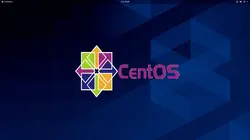Updates in CentOS and Red Hat's Flatpak in KDE
-
How updates work in CentOS [Ed: IBM views CentOS as little but an upselling strategy for RHEL]
Fedora is where day-to-day development and innovation happens. Fedora Linux releases every 6 months and each release is maintained for about 13 months. Major changes should be (and almost always are) deployed in Fedora first, following the Change process. Fedora packages sources are maintained in dist-git and built in Fedora Koji.
At the beginning of the development cycle of a new CentOS major release (meaning, 9, 10, etc.), Fedora is branched into the new distribution. Historically, this is done from the current stable Fedora release at the branching time (e.g. Fedora 34 for CentOS Stream 9). After the distribution is branched, the development cycle for the new CentOS Stream release begins.
Nowawadys, Fedora ELN helps prepare for the branching process by continuously rebuilding Rawhide (the development version of Fedora). This provides a view into what a new CentOS Stream could look like if it were branched from Fedora today, and ensures that the spec file logic stays compatible with the future set of EL macros and build flags at any given point in time.
-
GSoC Post 2: FlatpakKCM Update 2
My previous post in this series tracked what I had done until the 5th week, and gave some information on the technical aspects of the project. This post covers the work done since.
[...]
The KCM didn’t actually work like a KCM because changing a permission on the interface would instantly change the permission in the overrides file as well, instead of sending it to a “waiting” area until the user hits “Apply” button. Similarly, the “Default” and “Reset” buttons did nothing.
Most KCMs use a KConfig file, instead of an overrides file like being used here, to store the settings. This caused me to stall for a while since I wasn’t sure how to proceed, but after my mentors referred me to the tablets KCM, work picked up again and I proceeded to implementing the 3 buttons.

